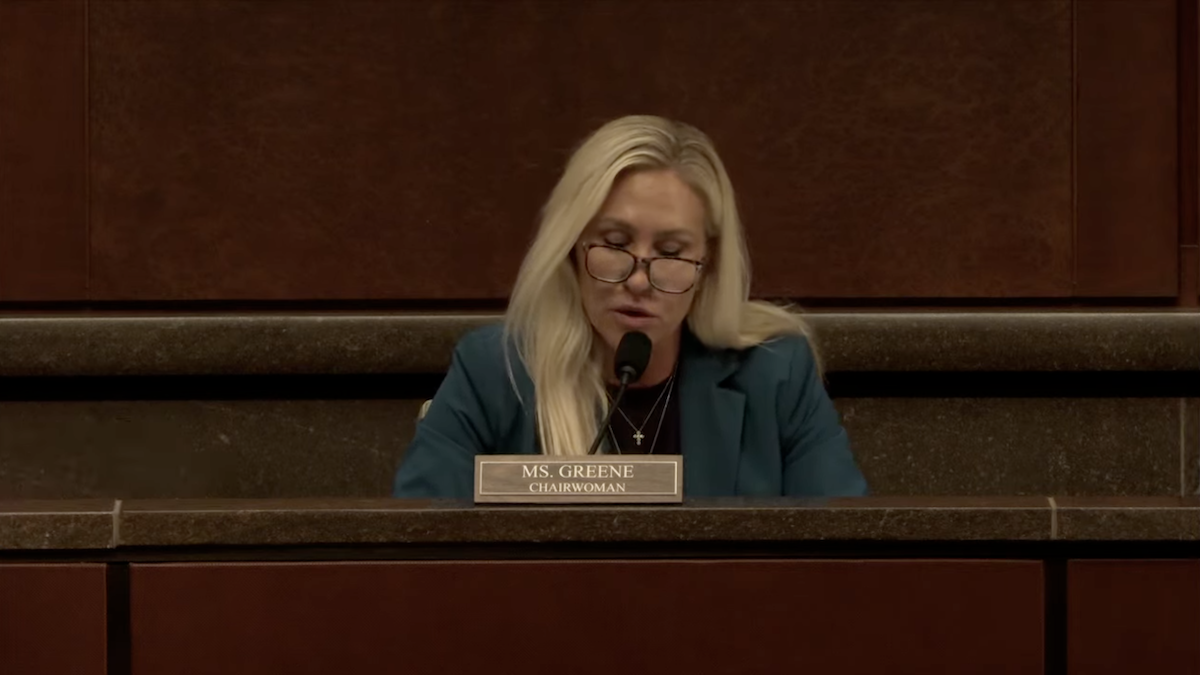Research & Developments is a blog for brief updates that provide context for the flurry of news regarding law and policy changes that impact science and scientists today.
Misunderstandings and disinformation abounded at a 16 September hearing of the Subcommittee on Delivering on Government Efficiency about geoengineering, which encompasses efforts to alter Earth systems for the purpose of mitigating climate change.
Rep. Marjorie Taylor Greene (R-GA), chairwoman of the subcommittee, called for an outright ban on geoengineering and used the hearing to promote her Clear Skies Act, which would impose fines of up to $100,000 and potentially jail time for anyone conducting “weather modification” activities.
Geoengineering is an amorphous term that can refer to a range of climate intervention activities, including cloud seeding to spur precipitation, management of solar radiation to cool Earth by reflecting sunlight, and carbon capture and sequestration efforts.
“Today’s advocates of geoengineering don’t just want to address droughts or improve conditions for agriculture” Greene said. “They want to control the Earth’s climate to address the fake climate change hoax and head off global warming. That, of course, requires massive interventions.”
In addition to asserting that climate change is a hoax, Greene implied that climate interventions could remove enough carbon dioxide from the atmosphere to harm plant life. In questioning, Rep. Brian Jack (R-GA) repeated a dubious claim that the release of dry ice into a hurricane in 1947 in an experiment called Project Cirrus caused the hurricane to turn toward Georgia. And Rep. Pat Fallon (R-TX) argued that former Vice President Al Gore’s misrepresentation regarding the melting of the north polar ice cap invalidates decades of climate science.
One witness during the hearing was Christopher Martz, a policy analyst and meteorologist at the Committee for a Constructive Tomorrow, an environmental policy think tank that has cast doubts on climate science. Martz received an undergraduate degree in meteorology in May and runs a weather blog that questions the influence of climate change in extreme weather events.
Martz asserted that the science behind climate change is uncertain, and therefore that climate intervention is an alarmist reaction: “Warming could be mostly natural and we just don’t know,” he said. It’s not: The vast majority of scientists agree that Earth is warming and human activities are to blame.
The hearing’s only climate scientist witness, former Lawrence Livermore National Laboratory scientist Michael MacCracken, tried to combat the climate denialism in the room. He challenged the ideas that current climate intervention efforts are sufficiently powerful or scalable enough to change a major weather phenomenon, or that they are targeted to harm the public.
Despite the falsehoods raised by Greene and others at the hearing, some of their comments aligned with how many scientists view climate intervention—as a potentially risky endeavor that requires more research before it is considered viable and safe.
AGU’s own Ethical Framework Principles for Climate Intervention Research, developed with the contributions of scientists, policymakers, ethicists, government agencies, nongovernmental organizations, and potentially impacted communities, acknowledges this perspective: “Substantial research and evaluation efforts will be required to determine the effectiveness, risks, and opportunities of climate intervention,” the framework states.
At the hearing, Greene asked “who would control the dial” if scientists managed to reliably alter Earth’s climate.
Such questions are a reason to lean into Earth systems research, said Roger Pielke, Jr., a political scientist at the conservative American Enterprise Institute who spoke at the hearing. Pielke called for Congress to enact legislation to improve oversight of geoengineering and recommended that Congress ask the National Academy of Sciences to assess what scientists do and don’t know about the effects of climate intervention activities.
Rep. Melanie Stansbury (D-NM), ranking member of the subcommittee, closed the hearing with a plea to support science. “Literally all we’re trying to accomplish by climate action is to keep our planet in some sort of balance,” she said, calling the Trump administration’s firing of federal scientists and engineers, the defunding of science agencies, the firing of the EPA science panel, and the deregulation of carbon emissions “dangerous.”
Stansbury and Greene agreed on one thing: “We have one Earth,” they each said.
—Grace van Deelen (@gvd.bsky.social), Staff Writer
These updates are made possible through information from the scientific community. Do you have a story about how changes in law or policy are affecting scientists or research? Send us a tip at [email protected].


